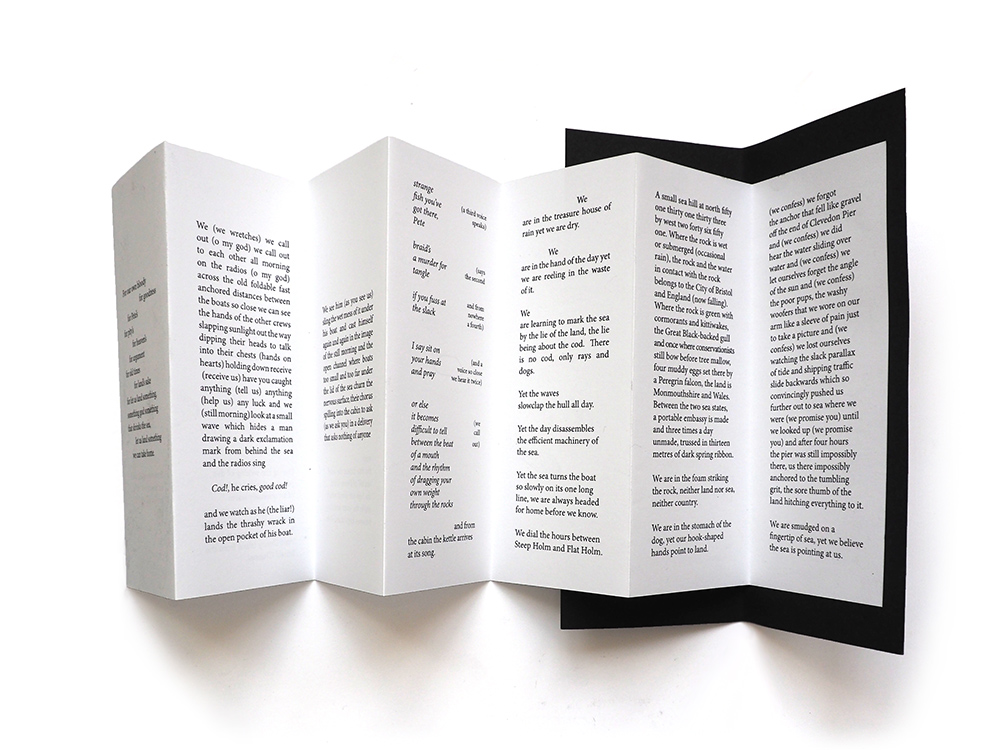
Behind the back of the poet, the Bristol Channel performs an old magic trick, unfolding the strange predicament of Denny Island, the small ‘sea hill’ that marks the boundary between England and Wales. Below the high tide mark – anything wet, anything submerged – Denny Island is in England. Above – where the Great Black-Backed Gull comes to nest – it is in Wales. On the unusually warm September morning of this expedition, the even more unusual spectacle of a fata morgana (a rare mirage formed by the lamination of hot and cold air) transforms Denny Island through various stages of ‘sea hill’ to space ship to levitating egg. By mid-morning, Denny Island is a floating ball of unbounded land, entirely Welsh, entirely delivered from the sea.


north fifty one thirty one thirty three by west two forty six fifty one is a sea prayer and prose poem written aboard a small fishing vessel in the middle of the Bristol Channel. The poem was commissioned by the Perspectives from the Sea Research Cluster at the University of Bristol and first performed at Being at Sea on the 18th November 2015, as part of the Inside Arts Festival of the Arts and Humanities and Being Human.
The poem takes its form from ‘A Thankesgiuing for Mariner being safely landed’ in Thomas Dekker’s Foure Birds of Noahs Arke (London, 1609) which carries a refrain of impossible reversals, of bodies and boats being delivered safely from the sea – but also the threat of the promise to ‘sound foorth his Name even amongst Turks and Saracens: and send abroad the miracle of our deliverance to the furthest corners of the earth’.
The poem has been produced as a limited edition of 30 numbered and signed concertinaed pamphlets which were distributed at the first performance. Each poem comes with a foiled fata morgana on the cover, although there is no guarantee it will lift lands or erase borders for you. For that another prayer needs to be answered.
The poem was written on site among the guts and brews and t-bar hook disgorgers of the fishermen’s day and trails the 13-metre tidal lines of the channel (the second highest in the world). Here, a thornback ray and its painfully familiar face have been hauled up from behind the dark murk of the Bristol Channel.
![]()


